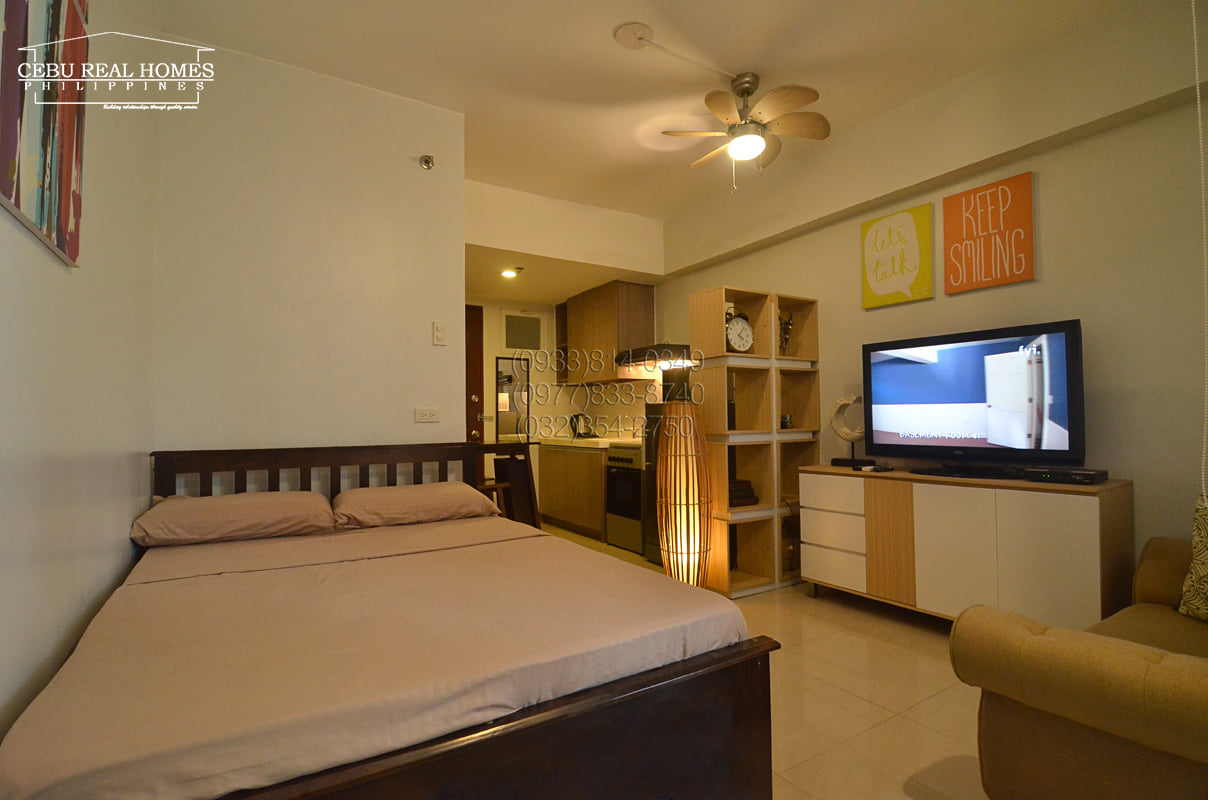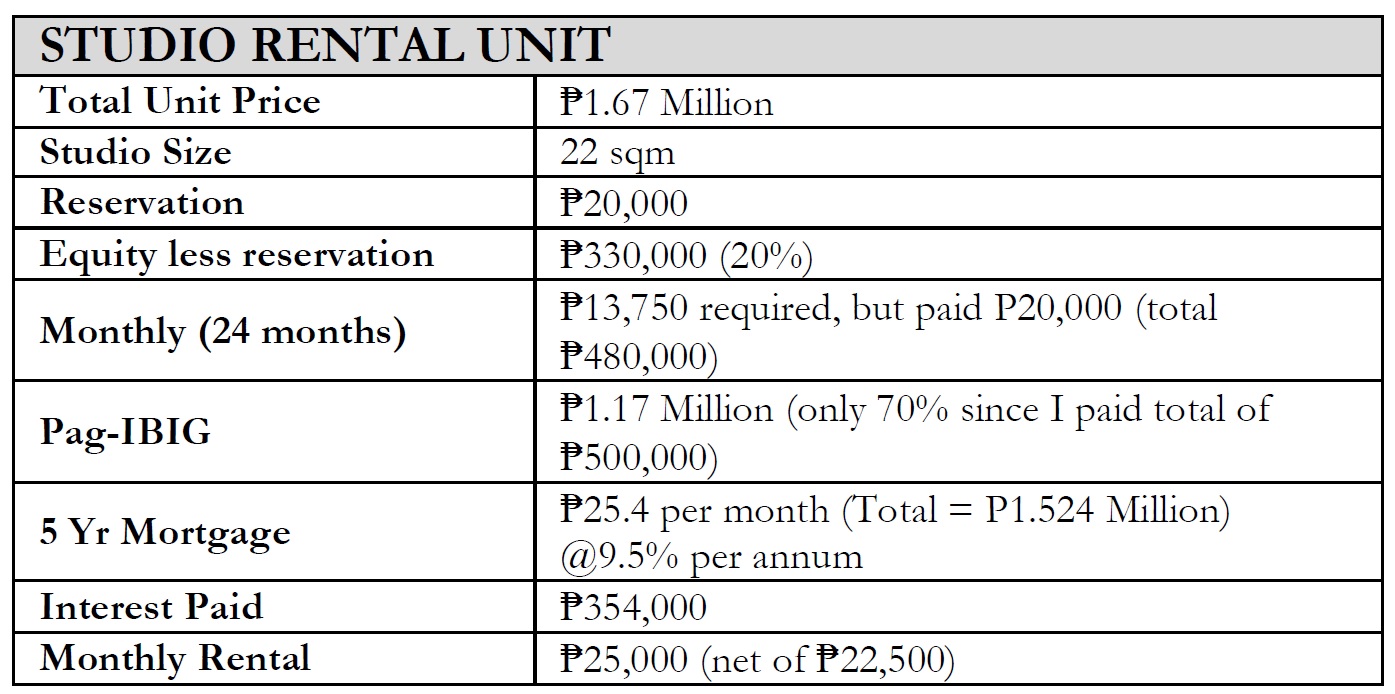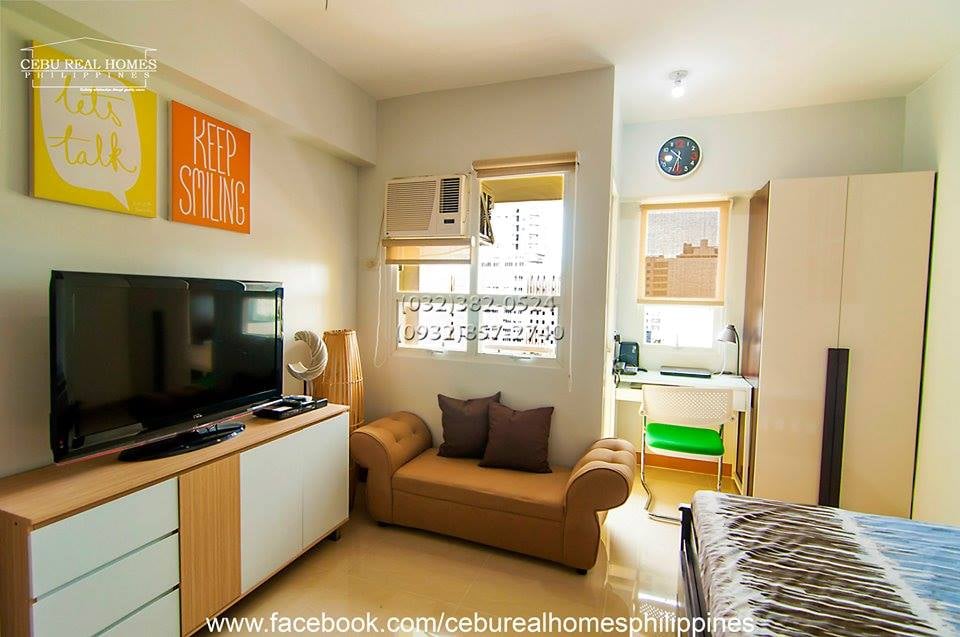Buying the First Rental Property for Passive Income Source
Though the blog title says, “Own It for Free and Rent It Out For A Fee“, I’ll be honest, it is not actually for free because you have to shell out an initial investment to own the property. However, in the long run, you get to own the rental property without really paying the full contract price. And if you are able to have it rented for a while, you will get your return on investment fast.
Let me explain by giving you an example of how I acquired my first rental property.
A studio unit (22 sqm) was sold to me at a pre-selling contract price of ₱1.67 Million. Pre-selling of a condominium unit happens when it is being sold during construction, or while still in the planning stages. The unit does not exist yet, so be sure to choose from a reliable real estate developer when getting a pre-selling unit.
I paid ₱20,000 as the unit reservation. In the Philippines, the maximum loanable amount that banks can provide for home mortgages is 80% of the total contract price. This can only be provided once the unit is already available. The unit was said to be ready in two years. While waiting for it to be turned over, I was supposed to pay 20% of the contract price less the down payment, ₱330,000 (₱1.65M x 20%) in 24 months, which is equivalent to ₱13,750 per month (₱330,000 / 24 months). However, I chose to pay ₱20,000 per month for 2 years, a total of P480,000.
When it was turned over after 2 years, I had already paid a total of ₱500,000 (₱480,000 + ₱20,000). Since I aimed to have it as a rental property unit, I immediately furnished the whole unit and spent ₱150,000, which results to total expenses of ₱650,000. However, I would like to emphasize that I did not provide the ₱500,000 in a lump sum; it was paid into the property every month, making it affordable.
For the remaining 70% (no longer 80% since I paid ₱20,000 for 24 months instead of ₱13,750), the property developer assisted in getting a mortgage. Though I could also get it through banks, I opted to get it through a Pag-IBIG housing fund, payable in 5 years at 9.5% per annum interest. My mortgage payment was ₱25,400 per month for the remaining balance of ₱1.17 Million (₱1.67 Million – ₱500,000).
However, after I furnished the rental property unit, I was able to rent it out at a monthly rental of ₱25,000. This is almost equivalent to the monthly mortgage, which means that the rent is already paying the property on its own. After 5 years of paying, I now completely own the property even if I only disbursed ₱650,000 from my pocket. Even if we say the net rental income is ₱22,500 (less property management fee, maintenance, and other expenses) and I have to pay extra ₱2,900 to compensate for the mortgage difference, which sums up to ₱174,000 in 5 years, the total money that I contributed towards owning the property is only P824,000 (₱650,000 + ₱174,000) compared to paying the full contract price of P1.67 Million.
Aside from that, the current value of the unit is now ₱2.7 Million. This means that you get to own a property worth ₱2.7 Million by just shelling out ₱824,000! This is now a completely passive income source earning P22,500 net per month after a complete mortgage payment! The return on investment based on the rental income is 3 years (₱824,000÷₱22,500).
Although, if you are going to sell the rental property, you already got your money back plus capital appreciation. But why sell the goose, when it can already provide you the golden eggs?

In summary, this is what the cash flow looked like.

Increasing the Number of Your Rental Property Units Through Leveraging
Since you already own the property, what if you are going to leverage the unit by making it collateral for a loan to purchase other rental property units? Leveraging is a technique involving the use of debt or borrowed funds rather than fresh equity in the purchase of an asset, with the expectation that the after-tax profit to equity holders from the transaction will exceed the borrowing cost.
For a ₱2.7 Million property, banks can provide 80% of the property value as the maximum loanable amount. However, let us just say you need only ₱1 Million to be paid in 10 years. A quick calculation for a loan with an 8% interest will result in ₱12,132 per month for 10 years.
Right across the street, there is another developer with units that are Ready for Occupancy (RFO). A studio unit costs ₱2.2 Million, but by paying a down payment of ₱100,000 you can already move in. On a 15-year mortgage, each unit has a monthly amortization of ₱21,000 at 8% interest per year.

Having ₱1 Million on hand from leveraging your first property, would you use that full amount to purchase another studio unit and pay the remaining balance through the rental income of the new unit?
What if you get two new studio units instead?

Hence, your cash flow now can be summarized as below:

If you notice, by taking a loan, your net income has been reduced to ₱13,300 instead of the original passive income of ₱22,500 net per month with the first property only. The upside though, is that you get to “own” three rental properties already worth P7.1 Million (P2.7 Million + ₱2.2 Million + ₱2.2Million). After 15 years, all properties are fully paid (the new loan on the the first rental property will be paid in full on the 10th year), which will now provide you:
• a passive income of ₱75,000 per month, assuming there is no inflation, and
• fixed assets equivalent to ₱7.1 Million, assuming there is no capital appreciation.
Worst case scenario, what if the two new properties acquired didn’t have good rental performance and were foreclosed? Then you are left with your first property with a ₱1 Million loan paying ₱12,200 per month for 10 years. However, who is paying for that loan? You? No. Your tenant through the rental income of your first property.
How much money did you take out from your pocket to own ₱7.1 Million worth of properties? Only ₱824,000! If everything fails with this strategy, the maximum amount of money that you will lose is ₱824,000 (this is your risk) but if everything goes well, you will gain ₱7.1 Million worth of properties (reward).
Another option that can be considered in building the passive income with the initial property at hand is to sell it at the current price of ₱2.7 Million, set up a franchise from the proceeds, and generate franchise income as fast and as best as you can—then rebuild your property rental income from the excess profit you get from your franchise businesses.
For some, this could already be an aggressive strategy that might not be suitable for their risk appetite. Though this is an option, the point that I wanted to achieve here is to illustrate that,
You don’t need cash on hand of ₱7 Million to own ₱7 Million worth of properties. You can own such properties for less than ₱1 Million.
Though it’s not owning them for free, it is far better than paying that much!
The advantage of owning a rental property is that you can predict your monthly cash flow, assuming that you have regular tenants. Unlike traditional business, rental property has consistent revenue and is not immediately affected by short-term changes in the economy. Your tenant does not instantly panic when China cuts trade ties with the US or the Euro becomes higher than the Yen. While you are consistently paying off your mortgage, your debt ratio decreases, and your profitability increases. In essence, you are paying yourself through the equity you are building in your property. Over time, your property will also appreciate in value like the studio unit we set as an example. It was ₱1.6 Million during pre-selling, and after 8 years, the current market value is ₱2.7 Million.
Tips When Buying Your Rental Property Unit
If you are pursuing rental property as one of your passive income sources, here is a quick checklist to help you start.
1. Location. If you can find a property where prospective tenants can live, and have easy access to work, and play, then this would be a potentially high-income and high-demand rental unit.
2. Determine your target market and net income. Generally, you go for middle-income earners because they are the largest sector of employed individuals in the area. However, you can also target high-income earners such as expatriates and businessmen. Your target market will determine your net income. You can check real estate sites (e.g. www.lamudi.com) to get an idea of how much are the potential rental rates in a territory.
3. Find reliable real estate developers. There have been a lot of unfortunate stories wherein individuals have been religiously paying their equity payments (staggered payments made towards, usually, 20% of the property value while it is still under planning or construction) but the unit turnover has been delayed several times. Be sure to conduct your research and due diligence when it comes to choosing property developers. Ask references, and check with existing clients for feedback.
4. Compare mortgages. If you are planning to get your property through mortgages, get quotes from at least 3 banks or financial institutions and find the best rate. You might want to let them “compete” with their offer by letting them know how much the other bank is providing. If you are Filipino, you can also check Pag-IBIG if they have competitive housing loan rates.
5. Check for damages and construction plan inconsistencies during turn-over. Once the property is ready for occupancy, you will be asked to perform a visual inspection and will be asked to sign that the property is acceptable. During this inspection, I recommend bringing with you an architect, civil engineer, plumber, or carpenter, or anyone who has similar expertise who can assist you in checking for possible defects. Also, bring a copy of your contract which stipulates which items or goods are included in your property purchase. For example, might have a shower divider panel listed but in the actual unit, you only have a shower curtain.
6. Short-term or Long-term rental contract. Some tenants would probably just stay for a week or a few months, and some would stay for a year or more. You have to determine what your rental business model is—whether you want to be an Airbnb host venturing in short-stay rentals, or you prefer long-term tenants. Though short-term stay will generate higher daily rates (e.g. ₱1,500 per day), I still prefer long-term tenants even at a lower rental income (₱25,000 per month) compared to daily rate since I am already assured of occupancy. Besides, property management is easier compared to cleaning the room daily. However, this would depend on what kind of rental property you will be running.
7. Get a property manager. Remember, our aim here is to own a business, not operate it. Hire a property manager (or company) to do the work for you, from marketing the property, getting tenants in/out, maintenance, and addressing client concerns. Usually, they charge one month’s rent for a year contract. Not to generalize, but I would suggest not relying on friends, or family, to manage a property for you. Even if you pay them, there is a conflict of interest in this because your relationship is not only business but also personal, and most of the time your personal relationship gets in the way.
8. Be proactive, not reactive. This has been my guiding principle in whatever business I engage. Rather than waiting for clients to complain, ask them how they are regularly. Great customer service will set you apart from the competitors.
Rental property is indeed one of the best passive income sources you can have. Consider having a few in your passive income portfolio.


